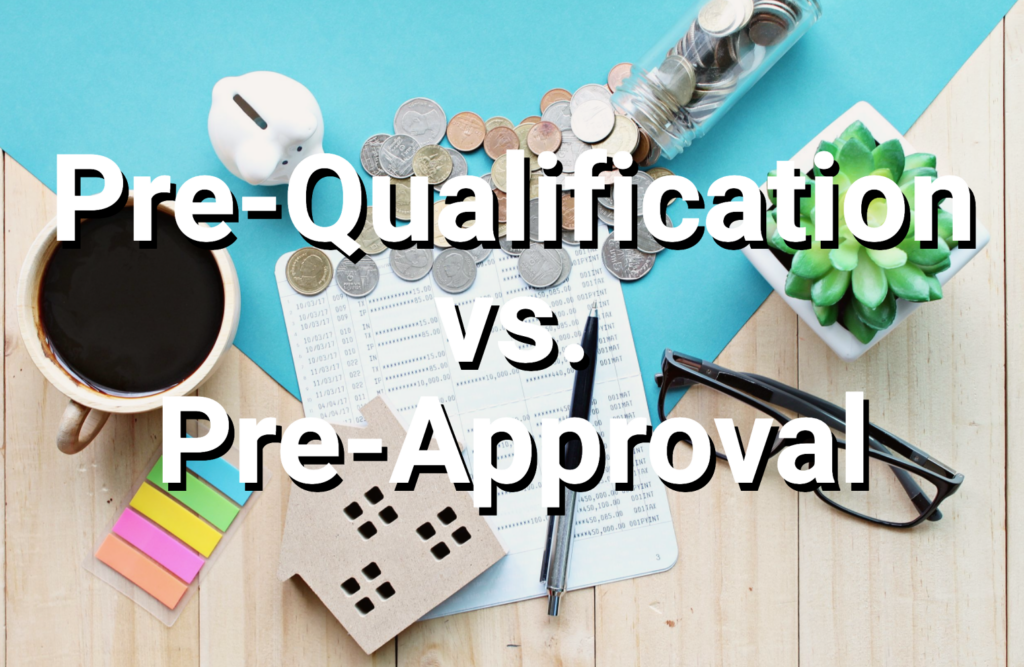The real estate and mortgage industries are loaded with terms that many people don’t understand. Debt-to-income ratios, conventional loans, and HELOC are just a few examples of terms that are used by professionals in our industry but often misunderstood by the general public.
So too are pre-qualification and pre-approval.
While similar, these are two different aspects of the real-estate buying process. Understanding pre-qualification vs pre-approval will make you a more informed buyer and help you make the right choice for your purchase.
Pre-Qualification vs Pre-Approval: What’s the Difference?
What is Pre-Qualification?
When you decide the time is right to purchase a home, one of the first steps you will take is to get pre-qualified. Pre-qualification is a basic first step that is conducted with a lender or lending agent, and it’s important when you want to start looking at homes, especially if you want to enjoy private showings.
As you meet with a lender for pre-qualification, you will need to describe (but not necessarily prove) your financial and credit situation. You will give a description of your credit, debt, income, and assets, although different lenders will have different requirements for their pre-qualification process.
After the lender looks at your information, he or she will give you a general description of whether or not you will be able to get the mortgage you need for a certain amount.
Essentially, pre-qualification is a statement that if all of the information you provided is accurate and nothing changes in your financial situation, you will (probably) be approved for a mortgage.
The lender will also include a certain amount. For example, pre-qualification states that if everything stays the same, you will be approved for a mortgage of $500,000. (Or $425,000 or $150,000 or whatever.)
Why Get Pre-Qualified?

This might seem like an additional hassle to an already complicated process, but it’s important to sellers and sellers’ agents, which makes it important to you. Sellers and their agents don’t want to waste time showing the home and going through the negotiating process with buyers who may not qualify. For this reason, they prefer to work with buyers who are prequalified, as it greatly reduces the chances of spending lots of time and energy with a buyer who can’t purchase the home in the first place.
Therefore, when you are pre-qualified, you will have access to more houses. You will be able to schedule private showings with real estate agents, and you’ll be able to choose from a larger pool of potential homes. In fact, some sellers will not show a home to buyers until they are pre-qualified. Considering that it only takes about a half-hour, and the process is completely free, there really is no reason not to get pre-qualified.
What is Pre-Approval?
Once you are pre-qualified for a purchase, you can go through the process of looking for a home. This can take a day or it can take a year (or longer), but once you find the home you want to buy and negotiate a purchase price, you will go through the process of pre-approval.
Pre-approval is a more detailed and thorough application process, but it also results in an official statement of intent from the lender, not a general statement like pre-qualification. Pre-approval for a mortgage takes into account your financial history, including a review of your financial documents such as tax returns and bank statements. For pre-approval, you’ll need W-2s, pay stubs, a summary of your assets, and information on current debts. Some lenders will conduct a credit check during pre-qualification, but virtually all will complete a credit check during pre-approval.
Assuming your financial information suits the requirements of the purchase in question, you’ll get a pre-approval letter, which states the amount and type of mortgage for which the lender is willing to offer. It will also include the terms.
Why “Pre-Approval,” and Not Just “Approval?”
One of the factors related to pre-approval is the specific property being purchased, which does not go into the pre-qualification. Lenders hold a legal right to the property being purchased in the event of a default on the loan. They need to know that the property is worth a certain amount; for example, they don’t want to loan $500,000 on a property that is only worth $200,000. So an appraisal on the property is needed before the official offer of a loan can be made. This is the biggest reason why you are “pre-approved” and not just “approved.”
Can I Just Get Pre-Approved Right Away?
Why not just skip the pre-qualification and go straight to pre-approval? After all, it seems like pre-qualification is just a miniature version of pre-approval; if you know you’re ready to buy, why not go right to the full measure? Because pre-approval often requires picking a specific property, and you might not have access properties without pre-qualification.
Pre-approval simply states that if all factors remain the same, including the value of the home after an inspection, you will be approved for the purchase. So while it is possible to skip pre-qualification, it’s often easier for buyers to first get pre-qualified, then shop for a home, then get pre-approved, then finalize the purchase.
Get Pre-Qualified Today and Start Your Search for a World-Class Home
If you are ready to shop for homes in your area, contact our staff to get pre-qualified today. We take a common sense to mortgage underwriting, increasing your chances of final approval. If you are approved, we can also send your application to the FastTrack system, which will result in a faster purchase.


